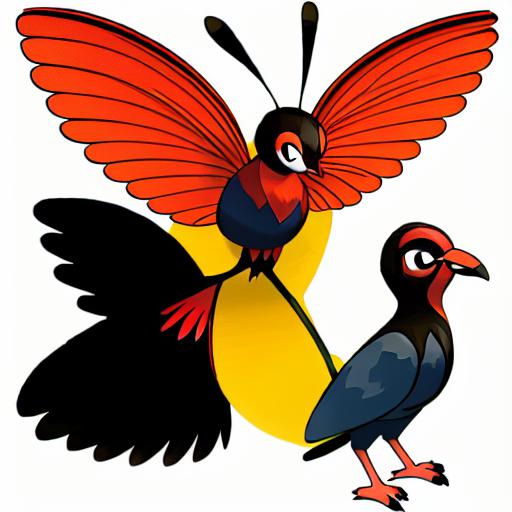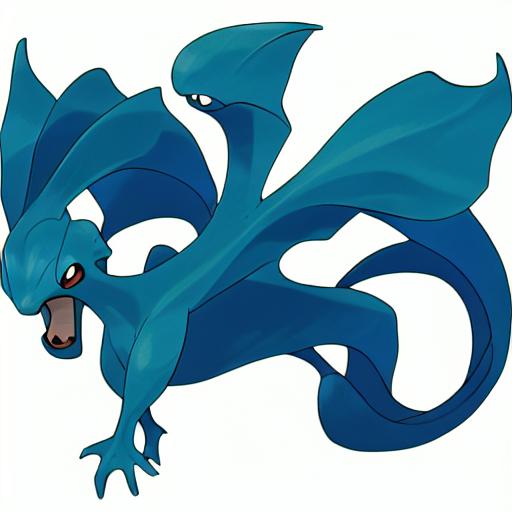metadata
language: zh
license: other
tags:
- stable-diffusion
- stable-diffusion-diffusers
- text-to-image
- zh
- Chinese
inference: false
extra_gated_prompt: >-
One more step before getting this model.
This model is open access and available to all, with a CreativeML OpenRAIL-M
license further specifying rights and usage.
The CreativeML OpenRAIL License specifies:
1. You can't use the model to deliberately produce nor share illegal or
harmful outputs or content
2. rinna Co., Ltd. claims no rights on the outputs you generate, you are free
to use them and are accountable for their use which must not go against the
provisions set in the license
3. You may re-distribute the weights and use the model commercially and/or as
a service. If you do, please be aware you have to include the same use
restrictions as the ones in the license and share a copy of the CreativeML
OpenRAIL-M to all your users (please read the license entirely and carefully)
Please read the full license here:
https://huggingface.co./spaces/CompVis/stable-diffusion-license
By clicking on "Access repository" below, you accept that your *contact
information* (email address and username) can be shared with the model authors
as well.
extra_gated_fields:
I have read the License and agree with its terms: checkbox
Chinese Stable Diffusion Pokemon Model Card
Stable-Diffusion-Pokemon-zh is a Chinese-specific latent text-to-image diffusion model capable of generating Pokemon images given any text input.
This model was trained by using a powerful text-to-image model, diffusers For more information about our training method, see train_zh_model.py.
Model Details
- Developed by: Zhipeng Yang
- Model type: Diffusion-based text-to-image generation model
- Language(s): Chinese
- License: The CreativeML OpenRAIL M license is an Open RAIL M license, adapted from the work that BigScience and the RAIL Initiative are jointly carrying in the area of responsible AI licensing. See also the article about the BLOOM Open RAIL license on which our license is based.
- Model Description: This is a model that can be used to generate and modify images based on text prompts. It is a Latent Diffusion Model (LDM) that used Stable Diffusion as a pre-trained model.
- Resources for more information: https://github.com/svjack/Stable-Diffusion-Pokemon
Examples
Firstly, install our package as follows. This package is modified 🤗's Diffusers library to run Chinese Stable Diffusion.
pip install git+https://github.com/rinnakk/japanese-stable-diffusion
pip install diffusers==0.4.1
sudo apt-get install git-lfs
git clone https://huggingface.co./svjack/Stable-Diffusion-Pokemon-zh
Run this command to log in with your HF Hub token if you haven't before:
huggingface-cli login
Running the pipeline with the LMSDiscreteScheduler scheduler:
import torch
import pandas as pd
from torch import autocast
from diffusers import LMSDiscreteScheduler
import torch
from transformers import BertForSequenceClassification, BertConfig, BertTokenizer, BertForTokenClassification
from transformers import CLIPProcessor, CLIPModel
import numpy as np
from diffusers.pipelines.stable_diffusion.pipeline_stable_diffusion import *
from japanese_stable_diffusion.pipeline_stable_diffusion import *
class StableDiffusionPipelineWrapper(StableDiffusionPipeline):
@torch.no_grad()
def __call__(
self,
prompt: Union[str, List[str]],
height: int = 512,
width: int = 512,
num_inference_steps: int = 50,
guidance_scale: float = 7.5,
negative_prompt: Optional[Union[str, List[str]]] = None,
num_images_per_prompt: Optional[int] = 1,
eta: float = 0.0,
generator: Optional[torch.Generator] = None,
latents: Optional[torch.FloatTensor] = None,
output_type: Optional[str] = "pil",
return_dict: bool = True,
callback: Optional[Callable[[int, int, torch.FloatTensor], None]] = None,
callback_steps: Optional[int] = 1,
**kwargs,
):
if isinstance(prompt, str):
batch_size = 1
elif isinstance(prompt, list):
batch_size = len(prompt)
else:
raise ValueError(f"`prompt` has to be of type `str` or `list` but is {type(prompt)}")
if height % 8 != 0 or width % 8 != 0:
raise ValueError(f"`height` and `width` have to be divisible by 8 but are {height} and {width}.")
if (callback_steps is None) or (
callback_steps is not None and (not isinstance(callback_steps, int) or callback_steps <= 0)
):
raise ValueError(
f"`callback_steps` has to be a positive integer but is {callback_steps} of type"
f" {type(callback_steps)}."
)
# get prompt text embeddings
text_inputs = self.tokenizer(
prompt,
padding="max_length",
max_length=self.tokenizer.model_max_length,
return_tensors="pt",
)
text_input_ids = text_inputs.input_ids
if text_input_ids.shape[-1] > self.tokenizer.model_max_length:
removed_text = self.tokenizer.batch_decode(text_input_ids[:, self.tokenizer.model_max_length :])
logger.warning(
"The following part of your input was truncated because CLIP can only handle sequences up to"
f" {self.tokenizer.model_max_length} tokens: {removed_text}"
)
text_input_ids = text_input_ids[:, : self.tokenizer.model_max_length]
text_embeddings = self.text_encoder(text_input_ids.to(self.device))[0]
# duplicate text embeddings for each generation per prompt, using mps friendly method
bs_embed, seq_len, _ = text_embeddings.shape
text_embeddings = text_embeddings.repeat(1, num_images_per_prompt, 1)
text_embeddings = text_embeddings.view(bs_embed * num_images_per_prompt, seq_len, -1)
# here `guidance_scale` is defined analog to the guidance weight `w` of equation (2)
# of the Imagen paper: https://arxiv.org/pdf/2205.11487.pdf . `guidance_scale = 1`
# corresponds to doing no classifier free guidance.
do_classifier_free_guidance = guidance_scale > 1.0
# get unconditional embeddings for classifier free guidance
if do_classifier_free_guidance:
uncond_tokens: List[str]
if negative_prompt is None:
uncond_tokens = [""]
elif type(prompt) is not type(negative_prompt):
raise TypeError(
f"`negative_prompt` should be the same type to `prompt`, but got {type(negative_prompt)} !="
f" {type(prompt)}."
)
elif isinstance(negative_prompt, str):
uncond_tokens = [negative_prompt]
elif batch_size != len(negative_prompt):
raise ValueError(
f"`negative_prompt`: {negative_prompt} has batch size {len(negative_prompt)}, but `prompt`:"
f" {prompt} has batch size {batch_size}. Please make sure that passed `negative_prompt` matches"
" the batch size of `prompt`."
)
else:
uncond_tokens = negative_prompt
max_length = text_input_ids.shape[-1]
uncond_input = self.tokenizer(
uncond_tokens,
padding="max_length",
max_length=max_length,
truncation=True,
return_tensors="pt",
)
uncond_embeddings = self.text_encoder(uncond_input.input_ids.to(self.device))[0]
# duplicate unconditional embeddings for each generation per prompt, using mps friendly method
seq_len = uncond_embeddings.shape[1]
uncond_embeddings = uncond_embeddings.repeat(batch_size, num_images_per_prompt, 1)
uncond_embeddings = uncond_embeddings.view(batch_size * num_images_per_prompt, seq_len, -1)
# For classifier free guidance, we need to do two forward passes.
# Here we concatenate the unconditional and text embeddings into a single batch
# to avoid doing two forward passes
text_embeddings = torch.cat([uncond_embeddings, text_embeddings])
# get the initial random noise unless the user supplied it
# Unlike in other pipelines, latents need to be generated in the target device
# for 1-to-1 results reproducibility with the CompVis implementation.
# However this currently doesn't work in `mps`.
latents_shape = (batch_size * num_images_per_prompt, self.unet.in_channels, height // 8, width // 8)
latents_dtype = text_embeddings.dtype
if latents is None:
if self.device.type == "mps":
# randn does not work reproducibly on mps
latents = torch.randn(latents_shape, generator=generator, device="cpu", dtype=latents_dtype).to(
self.device
)
else:
latents = torch.randn(latents_shape, generator=generator, device=self.device, dtype=latents_dtype)
else:
if latents.shape != latents_shape:
raise ValueError(f"Unexpected latents shape, got {latents.shape}, expected {latents_shape}")
latents = latents.to(self.device)
# set timesteps
self.scheduler.set_timesteps(num_inference_steps)
# Some schedulers like PNDM have timesteps as arrays
# It's more optimized to move all timesteps to correct device beforehand
timesteps_tensor = self.scheduler.timesteps.to(self.device)
# scale the initial noise by the standard deviation required by the scheduler
latents = latents * self.scheduler.init_noise_sigma
# prepare extra kwargs for the scheduler step, since not all schedulers have the same signature
# eta (η) is only used with the DDIMScheduler, it will be ignored for other schedulers.
# eta corresponds to η in DDIM paper: https://arxiv.org/abs/2010.02502
# and should be between [0, 1]
accepts_eta = "eta" in set(inspect.signature(self.scheduler.step).parameters.keys())
extra_step_kwargs = {}
if accepts_eta:
extra_step_kwargs["eta"] = eta
for i, t in enumerate(self.progress_bar(timesteps_tensor)):
# expand the latents if we are doing classifier free guidance
latent_model_input = torch.cat([latents] * 2) if do_classifier_free_guidance else latents
latent_model_input = self.scheduler.scale_model_input(latent_model_input, t)
# predict the noise residual
###text_embeddings
#print("before :" ,text_embeddings.shape)
eh_shape = text_embeddings.shape
if i == 0:
eh_pad = torch.zeros((eh_shape[0], eh_shape[1], 768 - 512))
eh_pad = eh_pad.to(self.device)
text_embeddings = torch.concat([text_embeddings, eh_pad], -1)
#print("after :" ,text_embeddings.shape)
noise_pred = self.unet(latent_model_input, t, encoder_hidden_states=text_embeddings).sample
# perform guidance
if do_classifier_free_guidance:
noise_pred_uncond, noise_pred_text = noise_pred.chunk(2)
noise_pred = noise_pred_uncond + guidance_scale * (noise_pred_text - noise_pred_uncond)
# compute the previous noisy sample x_t -> x_t-1
latents = self.scheduler.step(noise_pred, t, latents, **extra_step_kwargs).prev_sample
# call the callback, if provided
if callback is not None and i % callback_steps == 0:
callback(i, t, latents)
latents = 1 / 0.18215 * latents
image = self.vae.decode(latents).sample
image = (image / 2 + 0.5).clamp(0, 1)
# we always cast to float32 as this does not cause significant overhead and is compatible with bfloa16
image = image.cpu().permute(0, 2, 3, 1).float().numpy()
if self.safety_checker is not None:
safety_checker_input = self.feature_extractor(self.numpy_to_pil(image), return_tensors="pt").to(
self.device
)
image, has_nsfw_concept = self.safety_checker(
images=image, clip_input=safety_checker_input.pixel_values.to(text_embeddings.dtype)
)
else:
has_nsfw_concept = None
if output_type == "pil":
image = self.numpy_to_pil(image)
if not return_dict:
return (image, has_nsfw_concept)
return StableDiffusionPipelineOutput(images=image, nsfw_content_detected=has_nsfw_concept)
scheduler = LMSDiscreteScheduler(beta_start=0.00085, beta_end=0.012,
beta_schedule="scaled_linear", num_train_timesteps=1000)
#pretrained_model_name_or_path = "zh_model_20000"
#### sudo apt-get install git-lfs
#### git clone https://huggingface.co./svjack/Stable-Diffusion-Pokemon-zh
pretrained_model_name_or_path = "Stable-Diffusion-Pokemon-zh"
tokenizer = BertTokenizer.from_pretrained(pretrained_model_name_or_path, subfolder = "tokenizer")
text_encoder = BertForTokenClassification.from_pretrained(pretrained_model_name_or_path, subfolder = "text_encoder")
vae = AutoencoderKL.from_pretrained(pretrained_model_name_or_path, subfolder="vae")
unet = UNet2DConditionModel.from_pretrained(pretrained_model_name_or_path, subfolder="unet")
tokenizer.model_max_length = 77
pipeline_wrap = StableDiffusionPipelineWrapper(
text_encoder=text_encoder,
vae=vae,
unet=unet,
tokenizer=tokenizer,
scheduler=scheduler,
safety_checker=StableDiffusionSafetyChecker.from_pretrained("CompVis/stable-diffusion-safety-checker"),
feature_extractor=CLIPFeatureExtractor.from_pretrained("openai/clip-vit-base-patch32"),
)
pipeline_wrap.safety_checker = lambda images, clip_input: (images, False)
pipeline_wrap = pipeline_wrap.to("cuda")
imgs = pipeline_wrap("一个头上戴着盆栽的卡通人物",
num_inference_steps = 100
)
image = imgs.images[0]
image.save("output.png")


